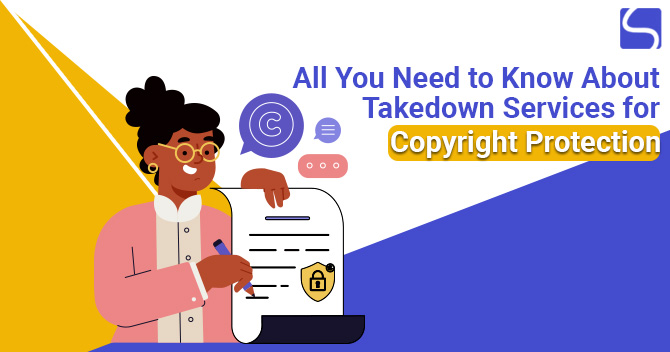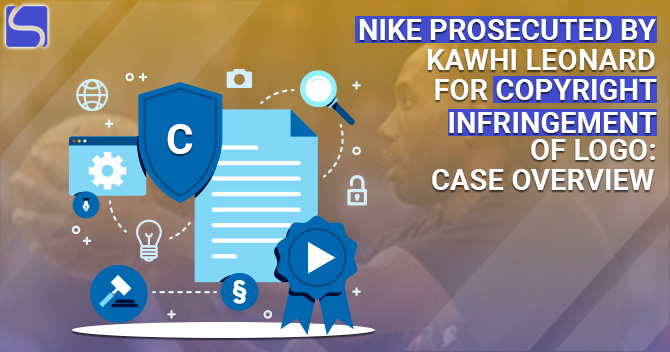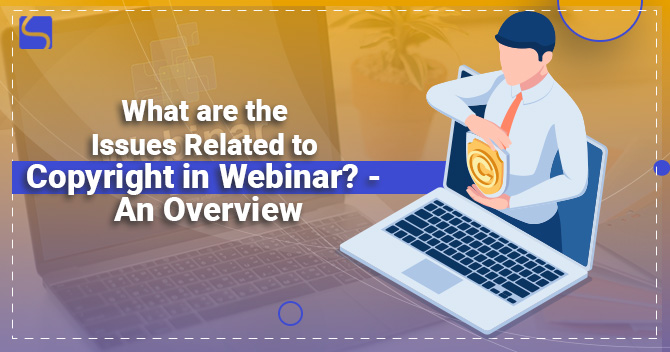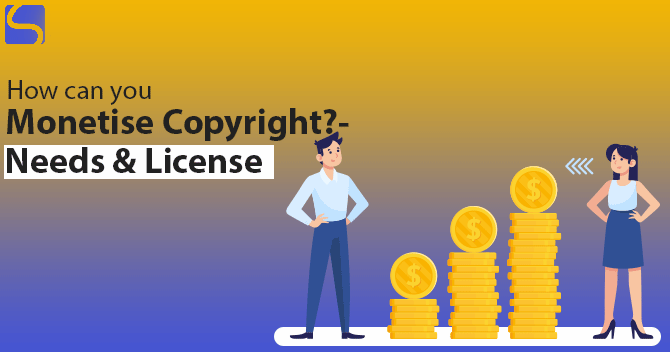All You Need to Know About Takedown Services for Copyright Protection

Karan Singh | Updated: Nov 01, 2021 | Category: Copyright
Copyright is an exclusive right granted to the author or creator of any dramatic, literary, creative, or musical work. It also gives the owner or creator the ability to reproduce the safeguarded work, disclose it to the public, alter it and translate it into any other form. Recently, it was discovered that various internet platforms are posting violating content to their websites without the Copyright owners’ permission. Since the internet has become easily accessible, the Copyright Infringement cases over the internet have increased. So to handle such problems, the Government has introduced the concept of Takedown Services for Copyright Protection, where the Copyright owner can issue takedown notices to the platforms violating their rights. Scroll down to check more information regarding Takedown Services for Copyright Protection.
Table of Contents
Meaning of Takedown Service
A Takedown Notice is a type of compliant letter directed to a website owner mentioning that the content presented by the website has violated the Copyright and asking them to remove such type of content from the website. Along with removing or deleting the content, they are supposed to take an online fingerprint of it and collect the same in their system so that the content wouldn’t be posted again until & unless the dispute has been resolved. According to the Copyright Law, Takedown Notice should comprise various elements, and if the elements are missing, then the service provider has the authority to refuse to take down the content violating the Copyright of the owner or holder.
In the United States of America (USA), laws governing Takedown Notices are mentioned under the DMCA, 1998 (Digital Millennium Copyright Act). The law provides strict punishment for Copyright Infringement and provides immunity to digital service providers and ISPs (Internet Service Providers) listed & located in the United States of America, such as YouTube, in the case of Copyright Infringement. Earlier, India didn’t have any particular law providing Takedown Notice for Copyright Infringement; it had only penalties for Copyright Infringement. However, due to increasing Copyright Infringements, India has begun issuing such notices to intermediaries who violate the Copyright of the owners.
What is the Use of Takedown Services for Copyright Protection?
In progress, Copyright Violations have led Copyright owners to use Takedown Services for Copyright Protection and protect their original content from being uploaded illegally. The use of Takedown Services for Copyright Protection is to inform ISPs that a concerned website has shown its content without their knowledge, thus violating the rights of the owners. The takedown notices are also used to prevent access to any hateful, illegal, and abusive content published on digital platforms. So, to ensure that such derogatory and unlawful content is not published by the people, the law has established a complaint redressal system that put intermediaries under an obligation to execute enough Due Diligence.
Many digital platforms give access to their users or any Copyright holder to raise complaints directly without any process concerning Copyright Violation with the platforms, which help in taking down any content infringing the Copyright owner’s rights. Some even go to the extent of penalising the individual who published the violating content by limiting their access to the relevant platform.
Process to File a Takedown Notice in India
Under Section 52 (1)(c) of the Copyright Act, 1957[1], an owner or holder of Copyright is required to issue a notice to the intermediary whose website displays or allows access to infringed or pirated content. Rule 75 of the Copyright Rules lays down the fundamentals of takedown and the process of providing the same. The following should be remembered while drafting the Takedown Notice:
- The description should be enough to recognise the work. There are many similar contents released on the internet every day, so the description must be definite and not unclear in order to stand out. A Copyright protected material should be clearly recognised on websites such as Facebook or YouTube before it may be removed.
- Copy of the work is brief or extra storage should be a violating copy owned by the complainant, and it shouldn’t be mentioned under Section 52 or any other Section under the Act.
- Person’s information who commits the crime by uploading the owner’s content by violating their Copyright.
- Details refer that the complainant is the only Copyright owner of the work. As a licensee, the complaint should comprise a license agreement copy along with the Copyright Takedown Notice.
- Location of all details where the work is stored. The notification of Copyright Takedown should provide a URL or link to the infringing work. If a website has a link or URL, its server can remove it quickly.
- Undertaking that the complainant files an infringement case in the suitable court against the individual who is accountable for releasing the violated content or work along with producing orders of the court having jurisdiction within 21 days from the receipt date of the notice.
In India, the notice must only be sent after the Copyright owner talks with a Copyright lawyer to entirely know the legal procedure and ensure that a robust case is presented that doesn’t come under Section 52 of the Copyright Act.
Moreover, the Copyright Rules also lays down that as the receipt of the complaint is received by the individual accountable for the storage of the violated copy of the original work, he is directed to remove the violated content within 36 hours and has to take vital measures to avoid access for the same for 21 days from the receipt date of the complaint or till they receive an order restraining them from giving access from the suitable court, whichever is first.
Case Study – Takedown Services for Copyright Protection
Following are some famous examples of Takedown services for Copyright Protection:
- Union of India vs Shreya Singhal: In this case, one of the issues before the Supreme Court was that whether Section 19 of the Information Technology Act is constitutionally valid for or not vis-a-vis Article 19 of the Constitution. The court was of a view that if the provisions of the Section are intermediaries, met are rejected from liability. By going through Section 79 (3)(b) and Rule 3 to hold that the knowledge mentioned in this Section should be attained exclusively via the method of a government agency or court order.
- Swami Ramdev vs Facebook, Inc. and Others: In this matter, defendants Facebook, Google, Twitter, and YouTube were ordered to remove URLs list from their relevant platforms that were allegedly derogatory to the plaintiffs. The proposal was taken by Swami Ramdev, stating that defamatory content & videos concerning the book called “Godman to Tycoon” were posted on the defendant’s platform. It was held by the Delhi HC (High Court) after considering the law on intermediary liability under the IT Act, 2000 and IT Rules, 2011 that the intermediates are directed to take down & block all such illegal content & videos uploaded on their platform from IP address in India. For the content published outside India, they were directed to use geo-blocking tools & stop content viewership.
IT Rules on Takedown Services for Copyright Protection
In February 2021, the Government introduced the IT (Intermediary Guidelines & Digital Media Ethics Code) Rules, 2021. These IT Rules provides for applicable due diligence by an intermediary. Accordingly, the intermediary is required to circulate rules & regulations, user agreement, or privacy policy to notify their users not to show, change, transit, host, upload any information which results in violation of any Copyright, Trademark, Patent or any other IPR (Intellectual Property Rules).
Moreover, these rules provide the manner in which the intermediary has to obey Takedown notice. It follows that when a mediator or intermediary receives a court’s order or is informed by the relevant Government or their agency regarding violating content, it shall not host, publish, or store any illegal details prohibited under any law. It also furnishes for a complaint redressal mechanism to establish by the mediator. The intermediary or mediator is required to appoint a Grievance Officer who will receive all grievances against the rules violation. The officer is required to admit the complaint within specified timelines and arrange such a complaint within 15 days.
However, as far as the Takedown Services for Copyright Protection are concerned, the new IT Rules have given a chance to the creators in case of any violation they can directly register their complaint with the officer with timely disposal of the same.
Conclusion
After discussing the importance of Takedown Services for Copyright Protection, we can conclude that Section 52 (1)(c) of the Copyright Act gives the owner the exclusive right to issue a Takedown Notice to digital platforms ordering them to remove violated content from their website quickly. Earlier the intermediary’s liability towards the Copyright owners was secondary and was not liable for the same if the court’s order was not followed. However, now this is not the matter; the new IT guidelines have given expectations to the content providers, as they can quickly file a compliant Grievance Officer and find a solution.
Read our article:Copyright Laws and IPR Laws – Know the Differences














